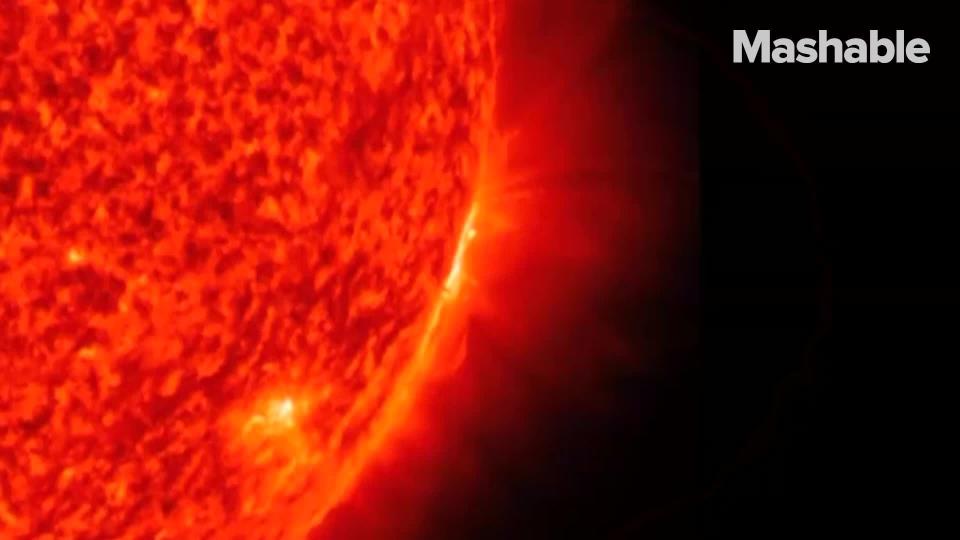A small robot is here to help after a mishap at a major nuclear waste site

A small robot is roving around a massive U.S. nuclear waste site to gather critical samples of potential air and water contamination after an emergency was declared Tuesday.
The machine was deployed after a tunnel that stores rail cars filled with radioactive waste partially collapsed at Hanford Nuclear Reservation in Washington state.
SEE ALSO: Greenland calls on Denmark to clean up toxic waste buried in melting ice sheet
The mishap raised fears of a radiation leak at the nation's most contaminated nuclear site, though officials said there was no actual indication of a release of plutonium radiation as of 2:20 p.m. PDT.
The air- and soil-sampling robot is monitoring for any changes on the scene.
This robot is being used at Hanford right now to sample contamination in the air and on the ground. pic.twitter.com/AFOrhIbB9S
— Susannah Frame (@SFrameK5) May 9, 2017
No workers were injured as a result of Tuesday's cave-in, officials said.
The robot isn't the only machine to have worked on the 500-square-mile site. A large robotic arm called the Mobile Arm Retrieval System (MARS) has been used in the past to scoop hundreds of gallons of radioactive waste from Hanford's underground storage tanks.
Hanford, which sits nearly 200 miles southeast of Seattle, was established by the Manhattan Project during World War II to make plutonium for nuclear weapons, including the atomic bomb that was dropped on Nagasaki, Japan, in 1945.
The site stopped producing plutonium in the late 1980s, and soon after, the U.S. Department of Energy, Environmental Protection Agency, and Washington state reached a landmark agreement to clean up the site.
Yet decades later, it remains a giant nuclear scab on the landscape. The area contains about 56 million gallons of radioactive waste, most of which are stored in nearly 180 underground tanks.

Image: department of energy
Last fall, Washington Attorney General Bob Ferguson filed a lawsuit against the Energy Department and its contractor that says vapors escaping from nuclear waste storage tanks post a serious health risks to Hanford workers, including chest and lung pain, headaches, and difficulty breathing. The Energy Department has said there is no evidence showing workers have been harmed by vapors.
Tuesday's accident happened atop one of two rail tunnels near the site's Plutonium Uranium Extraction Plant (PUREX), which sits in the middle of the Hanford site. The tunnels are each hundreds of feet long, with about eight feet of soil covering them. The Energy Department said two to four feet of soil collapsed over a 400-square-foot-area of one of the tunnels.
The mishap is the first real leadership test for Energy Secretary Rick Perry, who was confirmed to that position in early March.
Hanford Nuclear Site in Washington State has evacuated. pic.twitter.com/5bdZkXwe8u
— Dusty (@DustinGiebel) May 9, 2017
During a confirmation hearing in January, the former Texas governor and Dancing with the Stars contestant told the U.S. Senate he would prioritize cleanup efforts at Hanford, which he called "one of the most dangerous, polluted sites we have in the country."
The Energy Department in recent years has spent about $2 billion a year on cleanup work. A complete cleanup of the nuclear waste site could cost $107 billion and take until 2060 to complete, according to the latest government estimate.
Associated Press contributed reporting.
WATCH: This company is creating a fusion reactor, which is how stars produce energy


